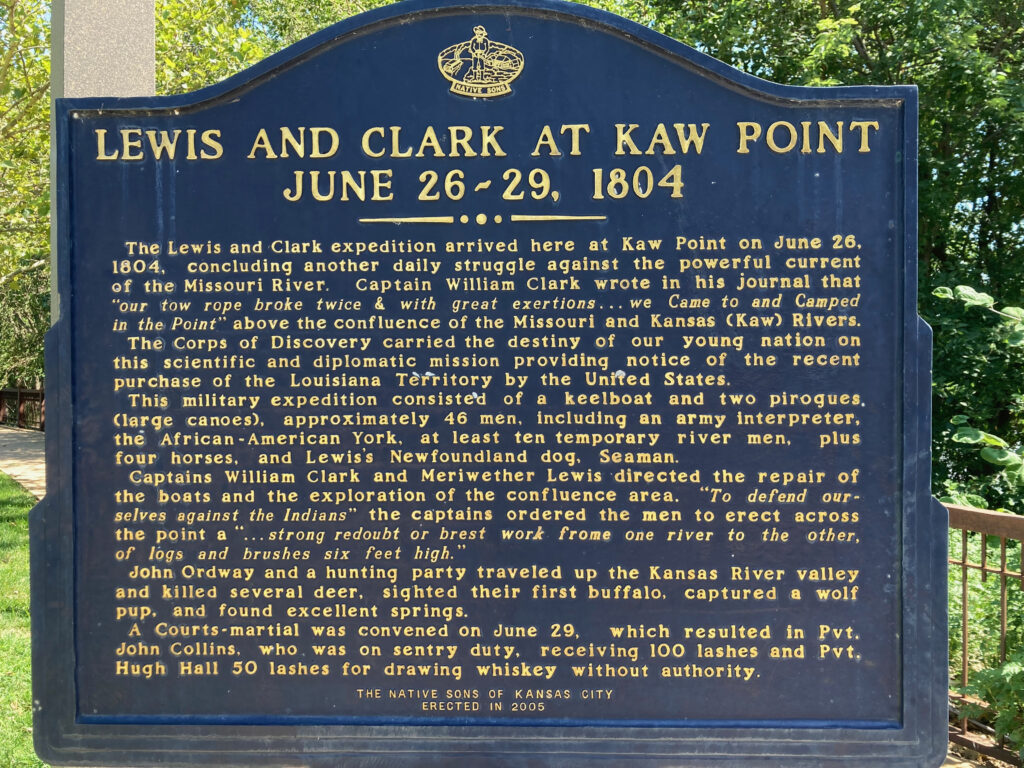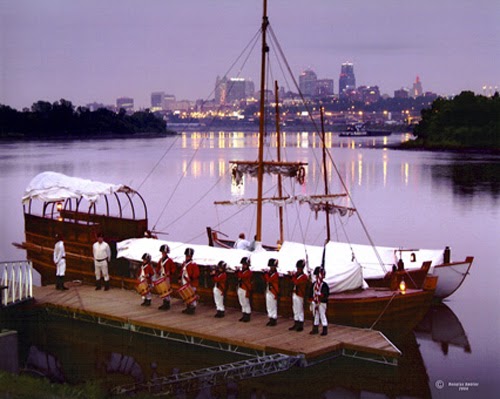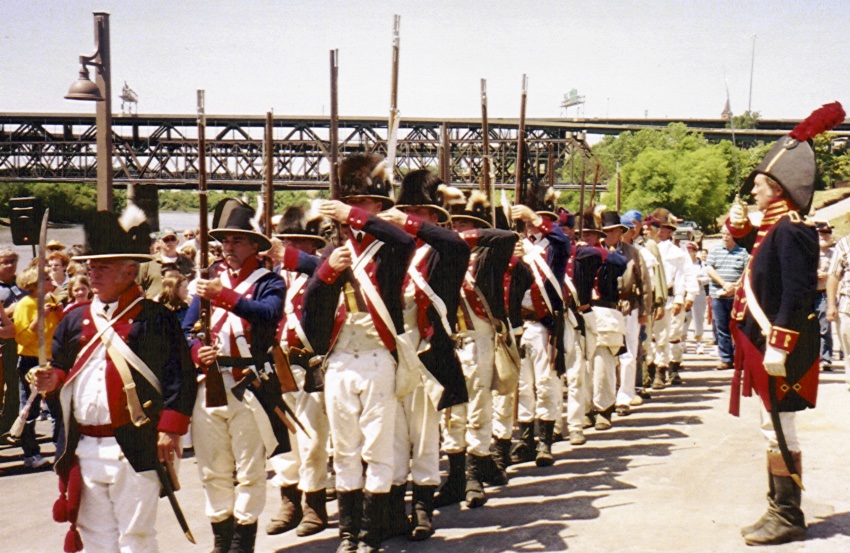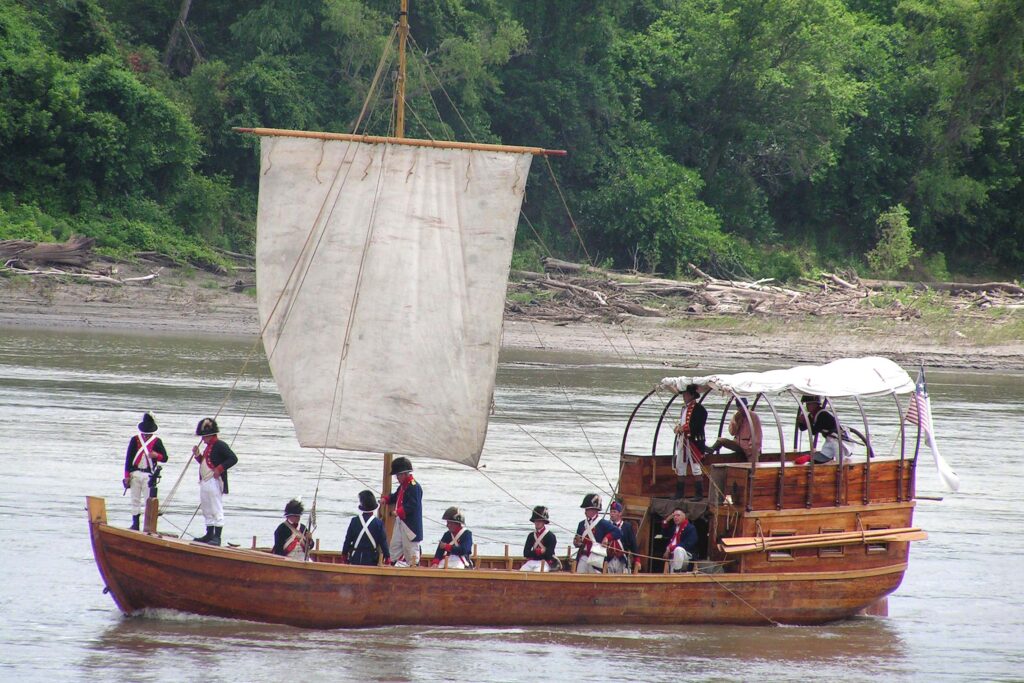Lewis and Clark at Kaw Point
On May 14, 1804, President Jefferson sent Captain Meriwether Lewis and Lt. William Clark, along with the initial crew of 51 men “to trace the Missouri to its source, to cross the Highlands, and follow the best water communication which offered itself from thence to the Pacific Ocean.”
The expedition arrived at “Kaw’s Mouth” (now called “Kaw Point”), where the Kansas River runs into the Missouri River, on June 26, 1804. At that time, Kaw Point was about 1/4 mile up the Missouri river from its current location.

The Corps of Discovery, now consisting of 51 members, including the dog Seaman, halted at the mouth of the Kansas for three days. Lewis weighed the water of the two rivers and found the Missouri’s to be heavier, meaning it carried more mud. Still, Clark found “the waters of the Kansas is very disigreeably tasted to me.”
The men sunned powder, hunted, repaired pirogues, dressed deer skins, took mathematical measurements of the area, and built a six foot high temporary fortification of logs and brush, called a redoudt. Later, Clark noted as they passed by the remains of “the 1st old Village of the Kanzas” a few miles upstream, they did not meet with any of these early residents of Wyandotte County.
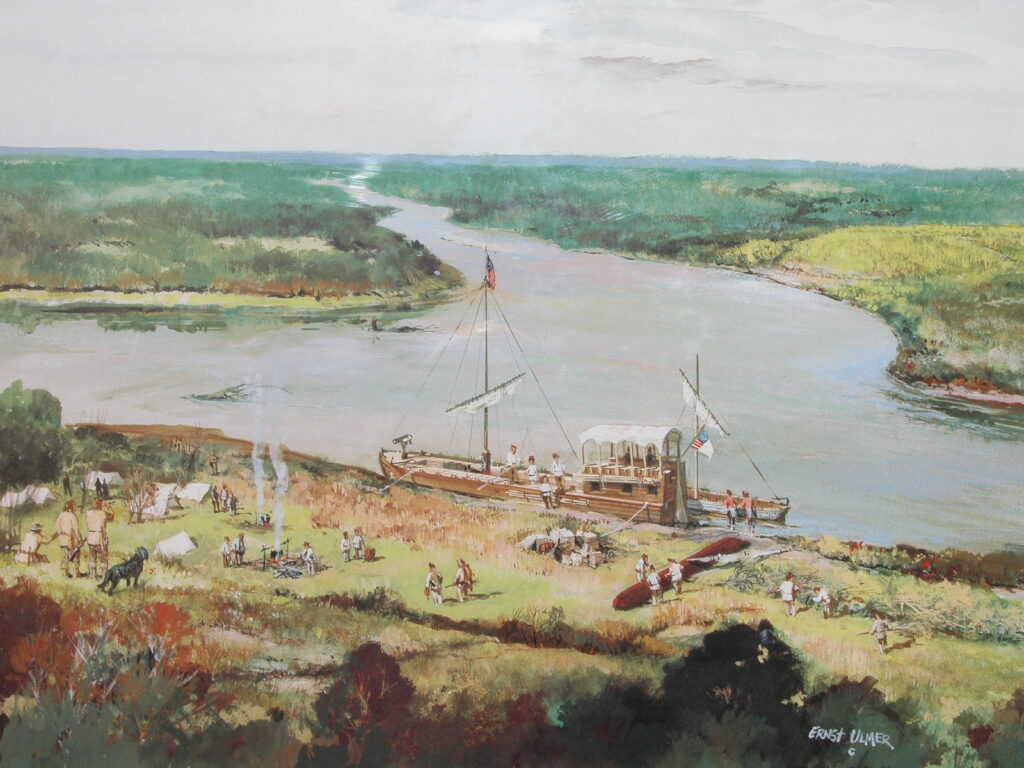
On the day the explorers first saw the Kansas, Clark wrote that they had encountered “a great number of Parrot queets.” The now extinct Carolina Parakeet inhabited the eastern part of the United States at that time. It moved about in compact flocks often numbering hundreds. Lewis and Clark were the first to record the presence of this colorful bird west of the Mississippi. They saw their first buffalo, but they had to wait eight more weeks, until August 23, before they succeeded in killing one.
Just after midnight, June 28-29, Private John Collins was on guard duty. He tapped a community whiskey barrel. He thought, “Just one little sip wouldn’t hurt. Just one more. Another.” Soon he was drunk. Private Hugh Hall came to relieve him of his duty and Collins offered him a drink; Hall accepted. Soon they were drunk together. At dawn, the sergeant-of-the-guard put them under arrest, and shortly thereafter Clark began drawing up court-martial papers to be presented to a court composed of the men of the expedition.
Collins was sentenced to one hundred lashes on his bare back; Hall was sentenced to fifty. “The Commanding Officers approve of the Sentence of the Court and orders that the Punishment take place at half past three this evening . . .”
But the expedition didn’t lose their services; both men were at the oars – groaning, but at the oars – as they left Kaw Point that afternoon.
Compiled by Janet Vogel
